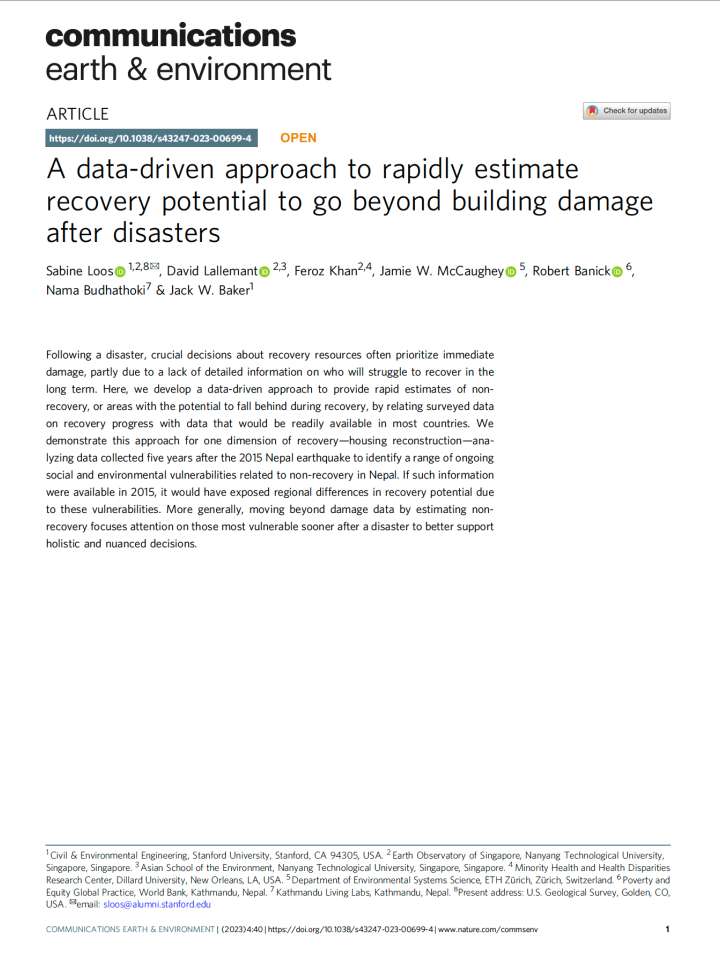A data-driven approach to rapidly estimate recovery potential to go beyond building damage after disasters
This study shifts attention beyond estimating building damage as the main source of information after an earthquake by introducing an approach to rapidly identify the obstacles that lead to the lack of household recovery progress. Following a disaster, crucial decisions about recovery resources often prioritize immediate damage, partly due to a lack of detailed information on who will struggle to recover in the long term.
The findings of this study support the perspective that housing recovery is a nonlinear and multifaceted process that depends both on pre-existing social vulnerabilities and practical constraints. While this is well-documented in natural hazards research, it is not clearly acknowledged or accounted for in rapidly available post-disaster information systems.
Explore further
